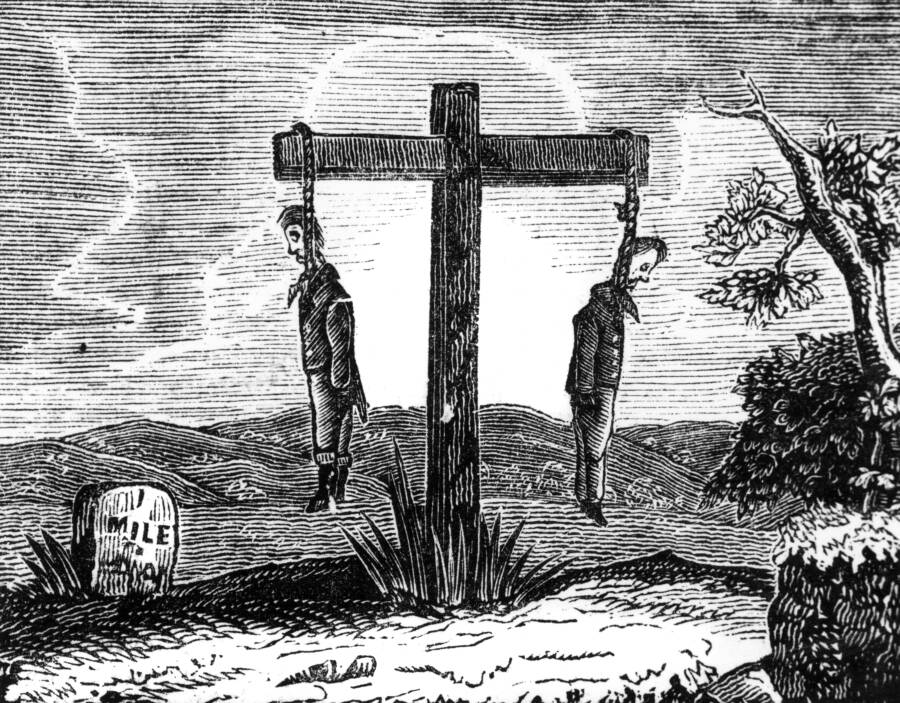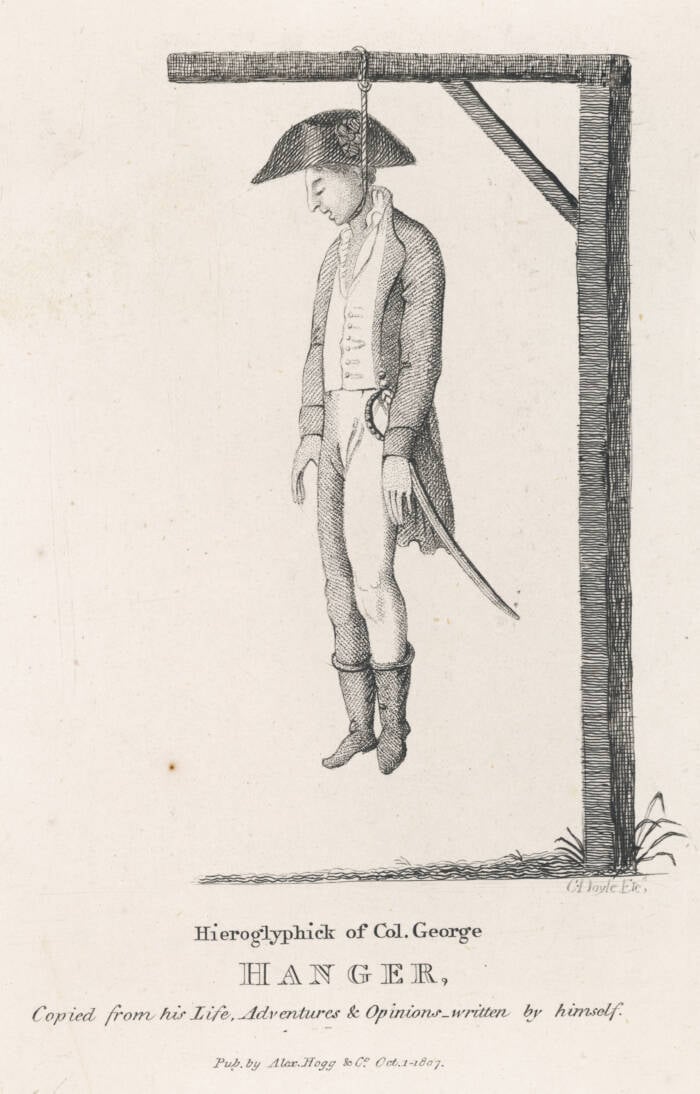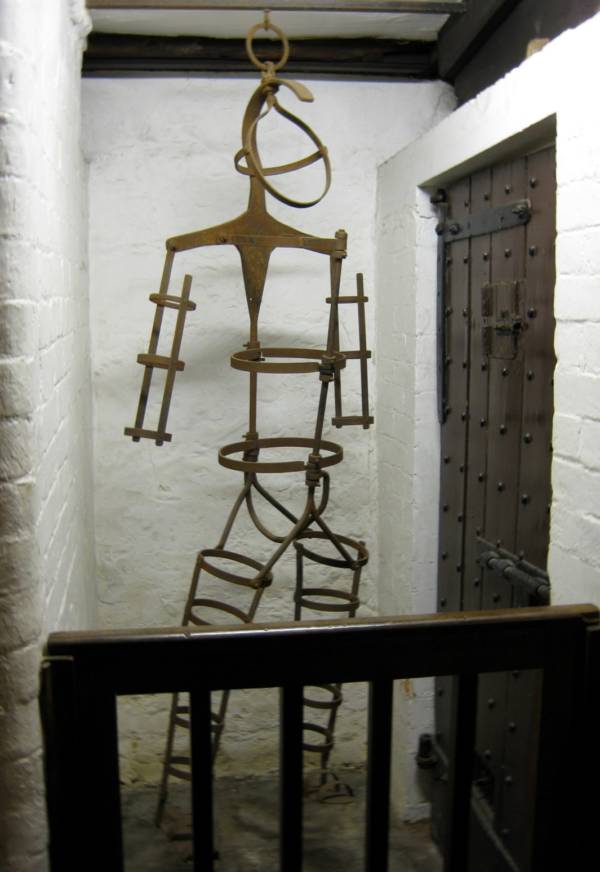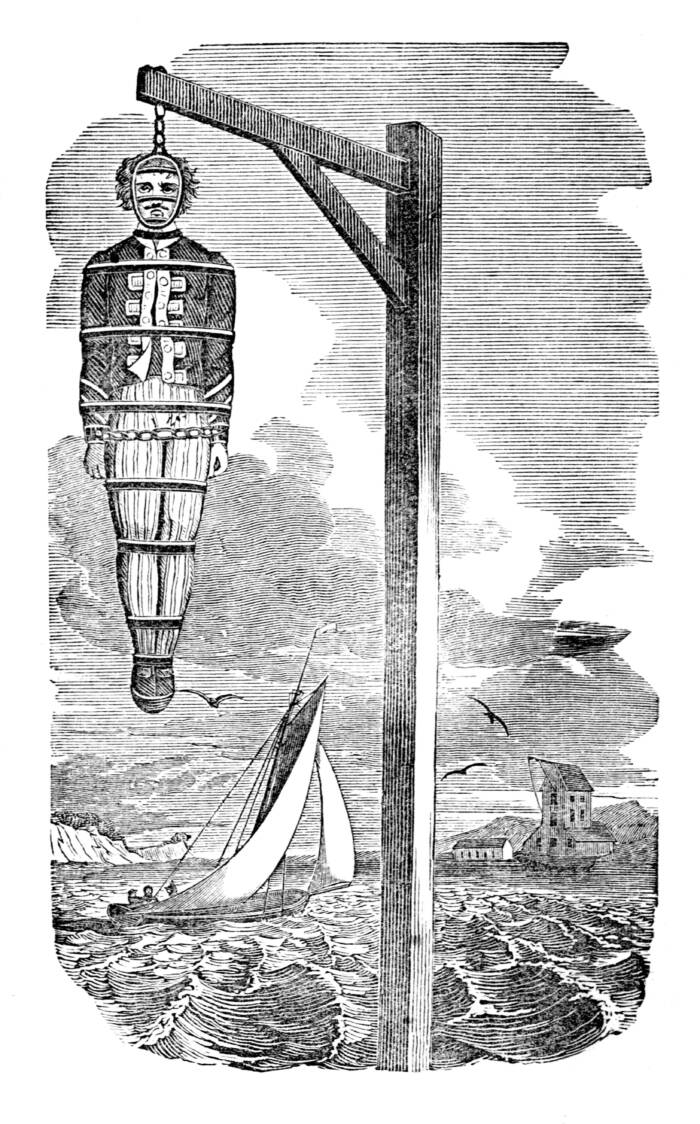Also referred to as “hanging in chains,” gibbeting typically concerned locking criminals in human-shaped cages and hanging them up in public areas as a warning to others.

Chronicle / Alamy Inventory PhotographThe gibbet was a type of public execution meant to discourage criminals.
All through historical past, criminals have been subjected to punishments that now appear needlessly grisly and barbaric. And notable amongst these was the gibbet.
Well-liked in 18th-century England, gibbeting generally concerned locking criminals in human-shaped cages and hanging them up for show in public areas as a warning to others. The gibbet itself refers back to the wood construction from which the cage was hung.
Typically, criminals had been executed previous to being gibbeted. Nevertheless, some unfortunate victims had been gibbeted alive and left to die.
This brutal, gallows-style public execution killed its victims over the course of a number of days by inflicting them to die of publicity, dehydration, or hunger. And though the gibbet was meant to discourage different would-be criminals from committing the identical crime because the sentenced, if the monarch on the time was unpopular, this might backfire significantly.
What Was The Gibbet?
The gibbet’s origins will be traced again to the Medieval interval, in accordance with Atlas Obscura, although it was generally used within the seventeenth and 18th centuries. The system was a mode of public execution, much like the guillotine, the executioner’s block, an impalement stake, or hanging gallows. Inserting a felony’s physique in a gibbet to be placed on show was often known as “hanging in chains.”
Regardless of having been in use for many years, the observe of gibbeting was formally codified in England by the Homicide Act of 1752. This act required these convicted of homicide to be both gibbeted or dissected, although the punishment has additionally been used for traitors, robbers, highwaymen, and pirates.
In reality, numerous legendary figures had been executed by gibbet, together with the notorious pirate Captain Kidd, who was hung in chains in London in 1701 and left hanging there as a warning to different would-be pirates.
By leaving lifeless our bodies hanging from the gibbet, regulation enforcement believed that different would-be criminals can be deterred from committing comparable crimes.
The victims of gibbeting had been nearly all the time males. Since feminine corpses had been in excessive demand from surgeons and anatomists, feminine criminals had been dissected relatively than gibbeted.


Andrew Dunn/Wikimedia CommonsReconstruction of a gibbet in Cambridgeshire, England.
The Spectacle Of Gibbeting
Oddly sufficient, the gibbeting of a felony was thought of to be an amazing spectacle. Excited crowds would collect to see it, generally amounting to tens of hundreds of individuals.
There have been, nonetheless, a couple of notable instances through which gibbeting backfired on an unpopular monarch. Such an occasion occurred within the early 14th century below the rule of King Edward II, as reported in English Wayfaring Life within the Center Ages by Jean Jules Jusserand. When Edward II’s enemies — the rebels Henry of Montfort and Henry of Wylynton — had been drawn and hanged, the king ordered their our bodies be displayed through gibbet close to Bristol.


Chronicle / Alamy Inventory PhotographAn 1804 illustration of an early execution gibbet.
On condition that Edward II was not nicely regarded by his individuals, nonetheless, the Henrys’ our bodies had been as a substitute made into relics and honored as symbols of rebel in opposition to the king. Some rumors even circulated that miracles had occurred in proximity to the gibbet that displayed their our bodies.
Finally, this barbaric observe started to lose some reputation till England lastly banned it in 1834. And in hindsight, it’s pretty straightforward to see why gibbeting fell out of favor.
Why Hanging In Chains Fell Out Of Favor
Whereas many seen gibbeting as a type of macabre spectacle, residing close to a gibbet was an disagreeable expertise.
Authorities deliberately made gibbeted our bodies tough to take down by hanging them from 30-foot-tall posts. On one event, they even studded a publish with 12,000 nails to maintain it from being eliminated.
Gibbets typically wouldn’t be eliminated till years after the our bodies had rotted and had been devoured by bugs and birds, turning into nothing greater than skeletons.


Clearview / Alamy Inventory PhotographWinter’s Gibbet in Northumberland.
The rotting corpses would typically stink so badly that close by residents must shut their home windows to maintain the wind from carrying the our bodies’ stench into their houses.
Moreover, gibbets made a chilling creaking, clanking sound as they twisted and swayed within the wind — a sound that was definitely eerie sufficient to spook those that lived close by.
Executions by gibbet had been additionally logistically tough to stage. Blacksmiths who had been tasked with making the cages typically had a tough time doing so, since they typically had no prior information of the buildings. Consequently, the cages’ designs diverse significantly.
Many objected to the observe on the grounds that it was barbaric. Some Christians additionally objected to it, arguing that displaying criminals’ our bodies posthumously was disrespectful.


NotFromUtrecht/Wikimedia CommonsA gibbet cage on show at Leicester Guildhall Museum.
Regardless of all of this, authorities insisted on utilizing this grisly type of execution for many years.
On the time, they felt that the important thing to stopping crime was making its punishment as appalling as potential. They argued that punishments like gibbeting confirmed would-be criminals that breaking the regulation was removed from worthwhile.


Science Historical past Photographs / Alamy Inventory PhotographAn 18th-century illustration depicting Captain Kidd hanging in chains for piracy.
Nevertheless, regardless of the appalling nature of gibbeting, crime in England failed to say no whereas the observe was in use. That is maybe a part of the rationale why it was formally abolished in 1834.
Nonetheless, remnants of the observe will be discovered all through England. Greater than a dozen gibbet cages stay within the nation, most of that are in small museums.
Moreover, many criminals lent their names to the locations the place they had been gibbeted. Because of this, numerous England’s cities and areas have roads and options that bear the names of gibbeted criminals. These locations function reminders of the disturbing punishment that the nation as soon as embraced.
After studying concerning the grisly observe of gibbeting, learn the final phrases of 23 infamous criminals earlier than they had been executed. Then, study concerning the brutal historical past of immurement, the execution technique that entombed victims alive.

